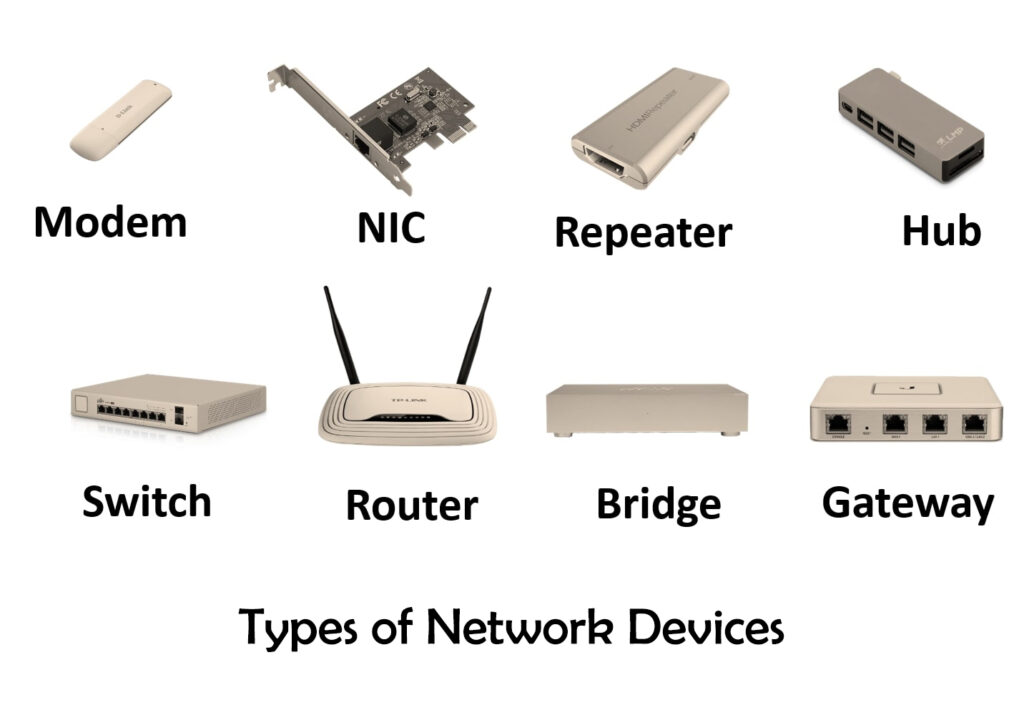
Hub
Hubs connect multiple computer networking devices together. A hub is the simplest in the family of network-connecting devices because it connects LAN components with identical protocols.
Switch
Switches are more intelligent than hubs. A switch is a multiport device that improves network efficiency. The switch maintains limited routing information about nodes in the internal network, and it allows connections to systems like hubs or routers.
Routers
Routers help transmit packets to their destinations by charting a path through the sea of interconnected networking devices using different network topologies. Routers are intelligent devices, and they store information about the networks they’re connected to. They are used to translate from LAN framing to WAN framing. This is needed because LANs and WANs use different network protocols. Router are also used to divide internal networks into two or more subnetworks. Routers can also be connected internally to other routers, creating zones that operate independently.
(OSPF).Bridge
Bridges are used to connect two or more hosts or network segments together. Bridges can also be used to connect two physical LANs into a larger logical LAN.
Gateway
Gateways help connect two or more autonomous networks, each with its own routing algorithms, protocols, topology, domain name service, and network administration procedures and policies. Gateways perform all of the functions of routers and more.
Modem
Modems (modulators-demodulators) are used to transmit digital signals over analog telephone lines. Thus, digital signals are converted by the modem into analog signals of different frequencies and transmitted to a modem at the receiving location. The receiving modem performs the reverse transformation and provides a digital output to a device connected to a modem, usually a computer.
Repeater
A repeater is an electronic device that amplifies the signal it receives. You can think of a repeater as a device that receives a signal and retransmits it at a higher level or higher power so that the signal can cover longer distances, more than 100 meters for standard LAN cables.
Access Point
Wireless access points (WAPs) consist of a transmitter and receiver (transceiver) device used to create a wireless LAN (WLAN). Access points typically are separate network devices with a built-in antenna, transmitter and adapter. APs use the wireless infrastructure network mode to provide a connection point between WLANs and a wired Ethernet LAN. They also have several ports, giving you a way to expand the network to support additional clients.
Network Adaptor
A network interface controller is a computer hardware component that connects a computer to a computer network.
 ශිල්ප 64
ශිල්ප 64